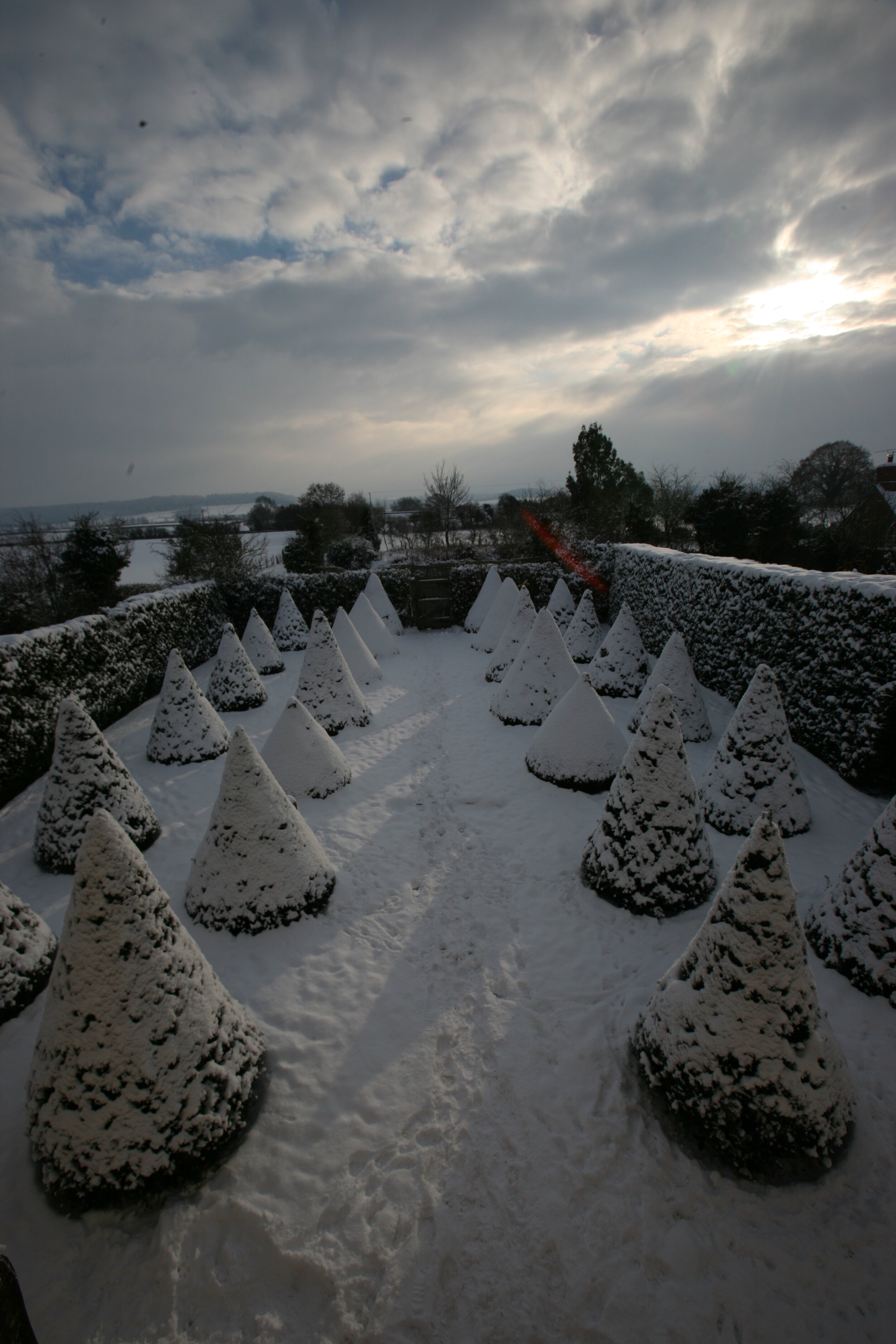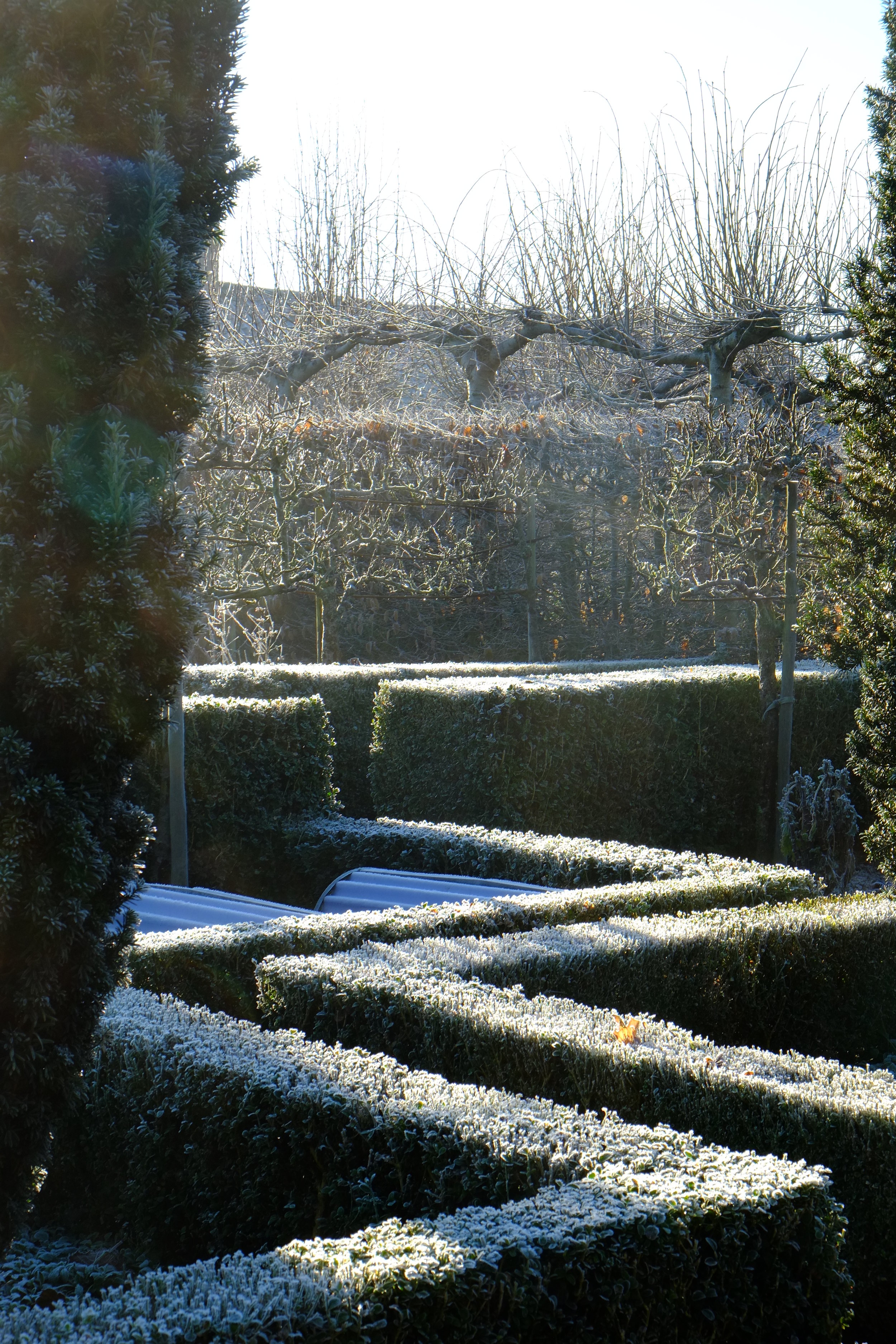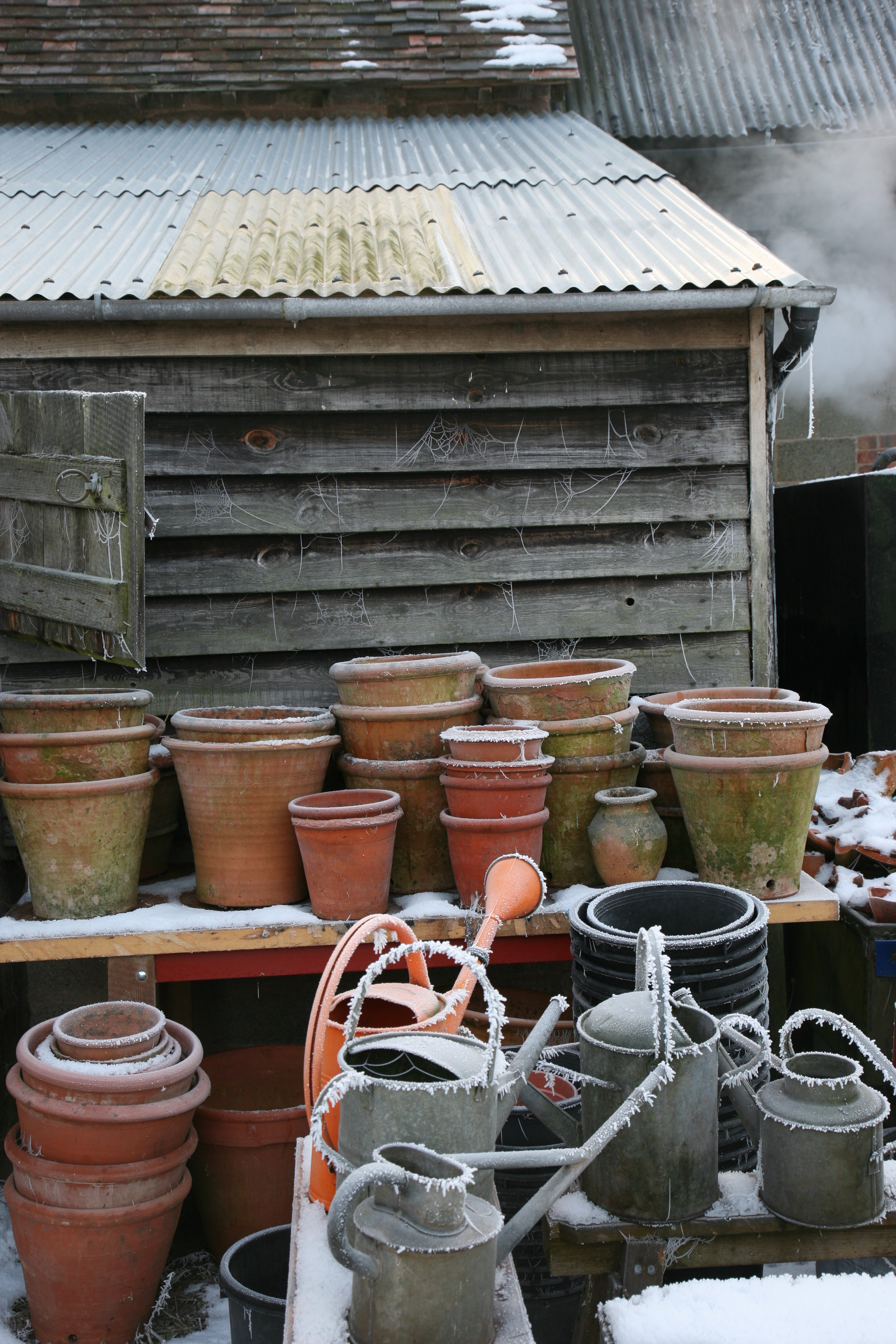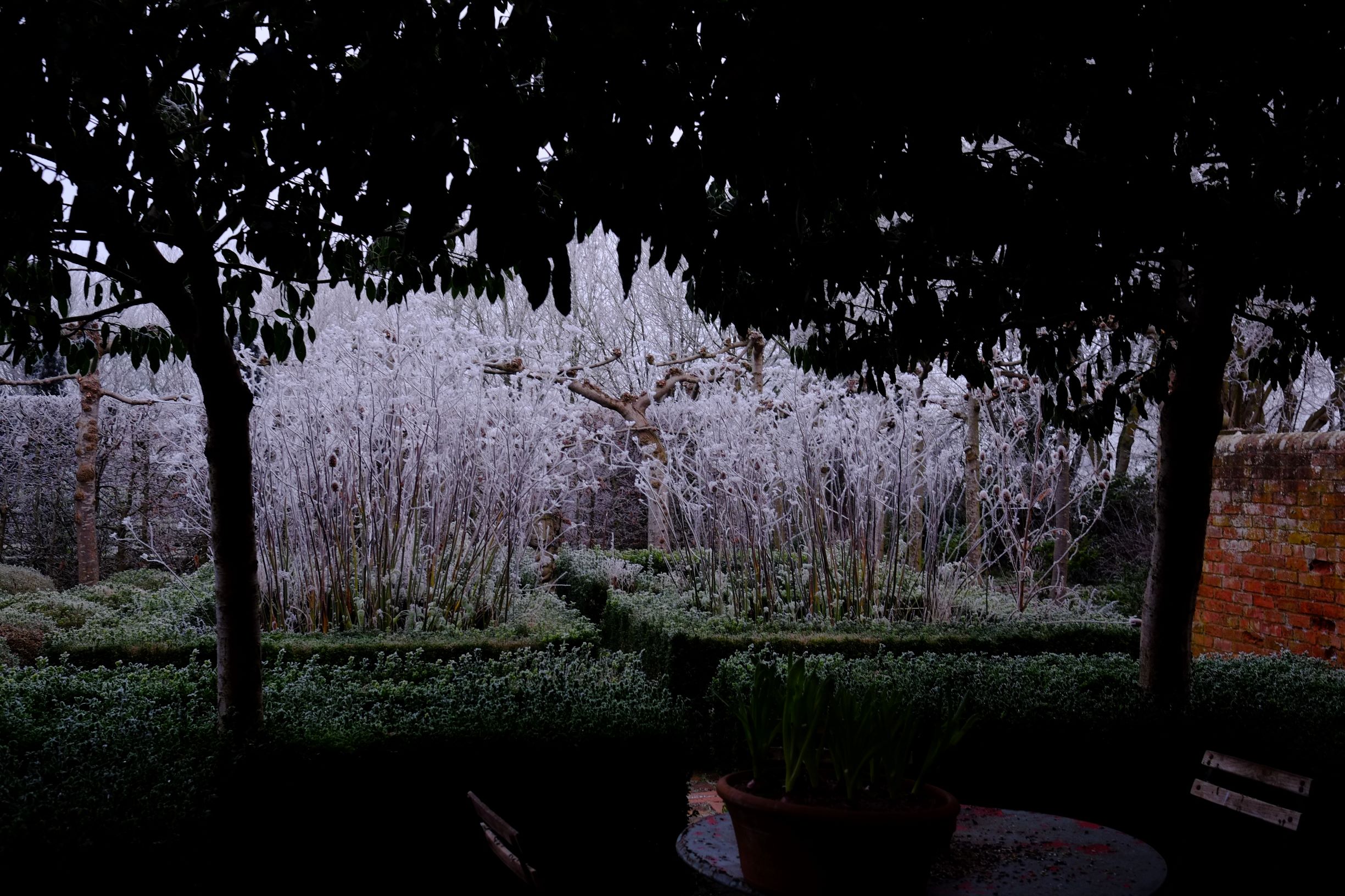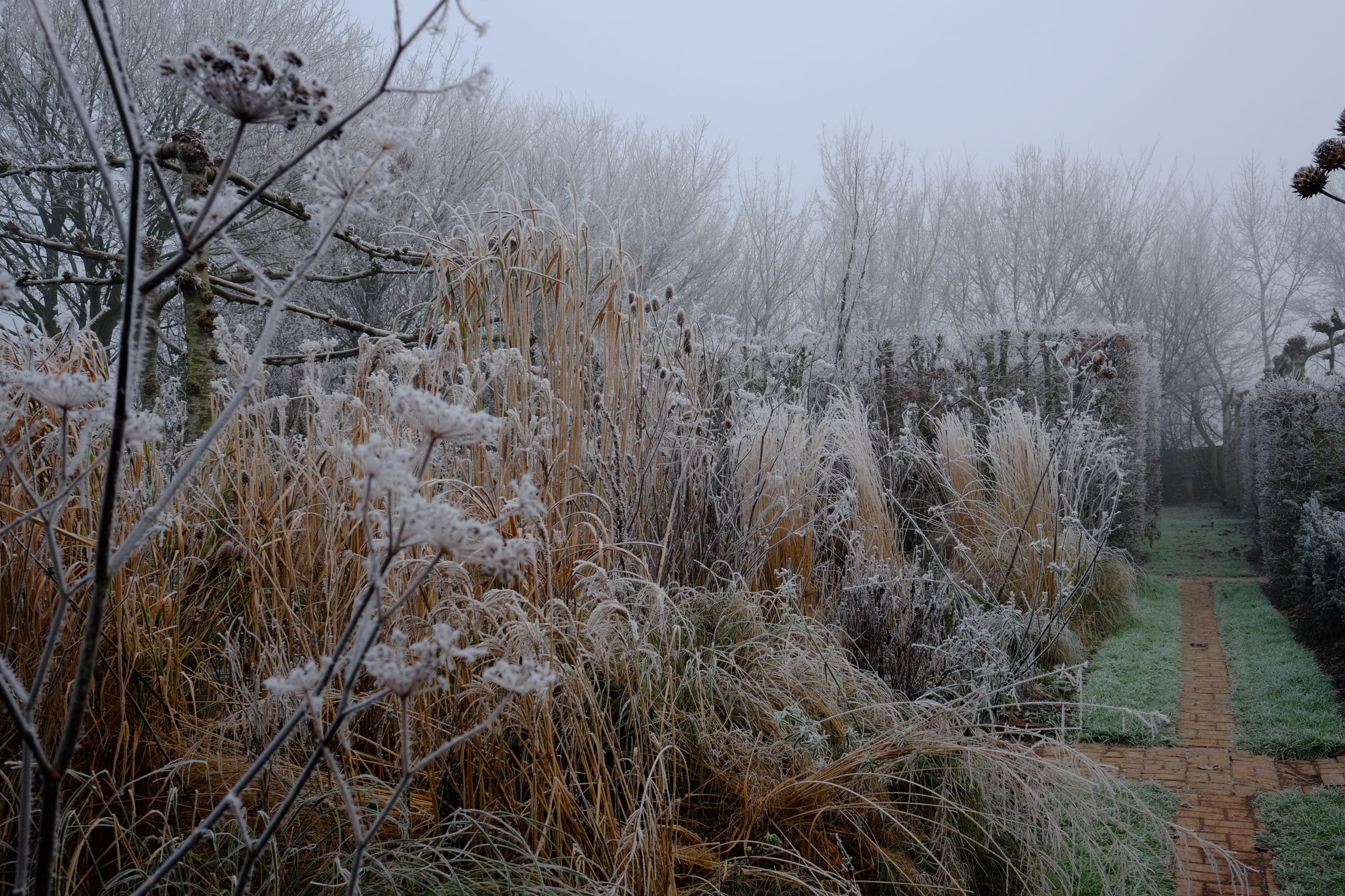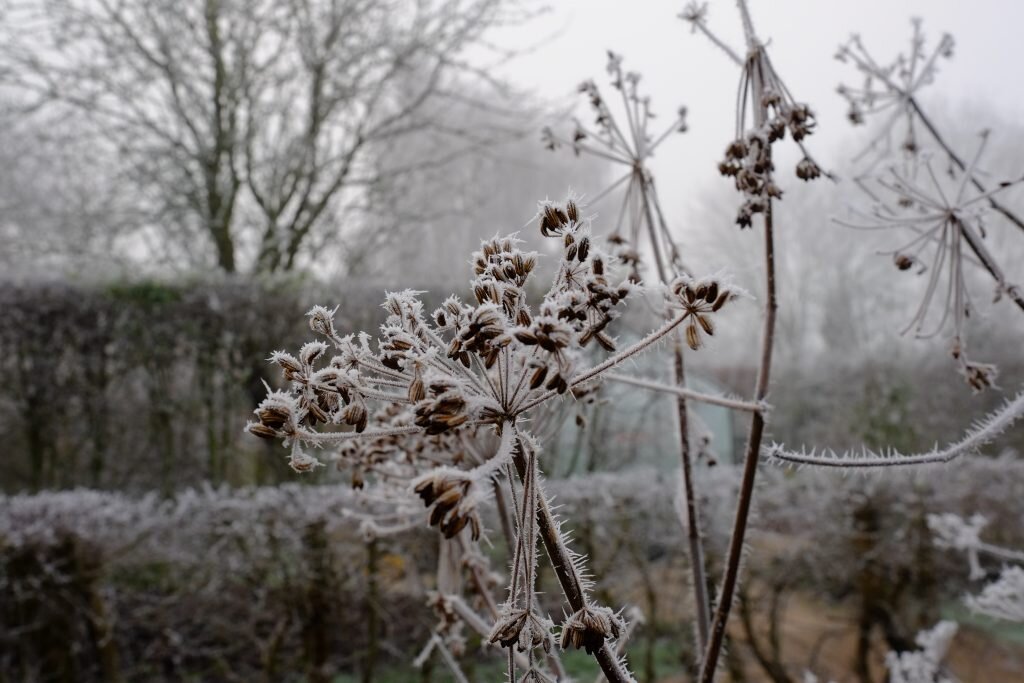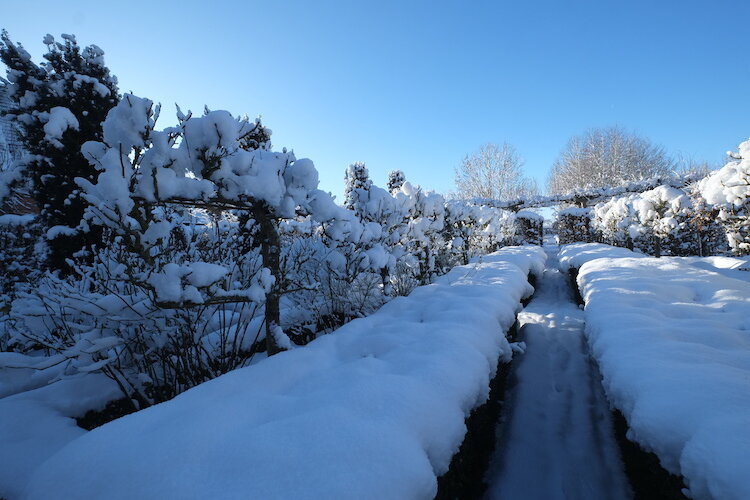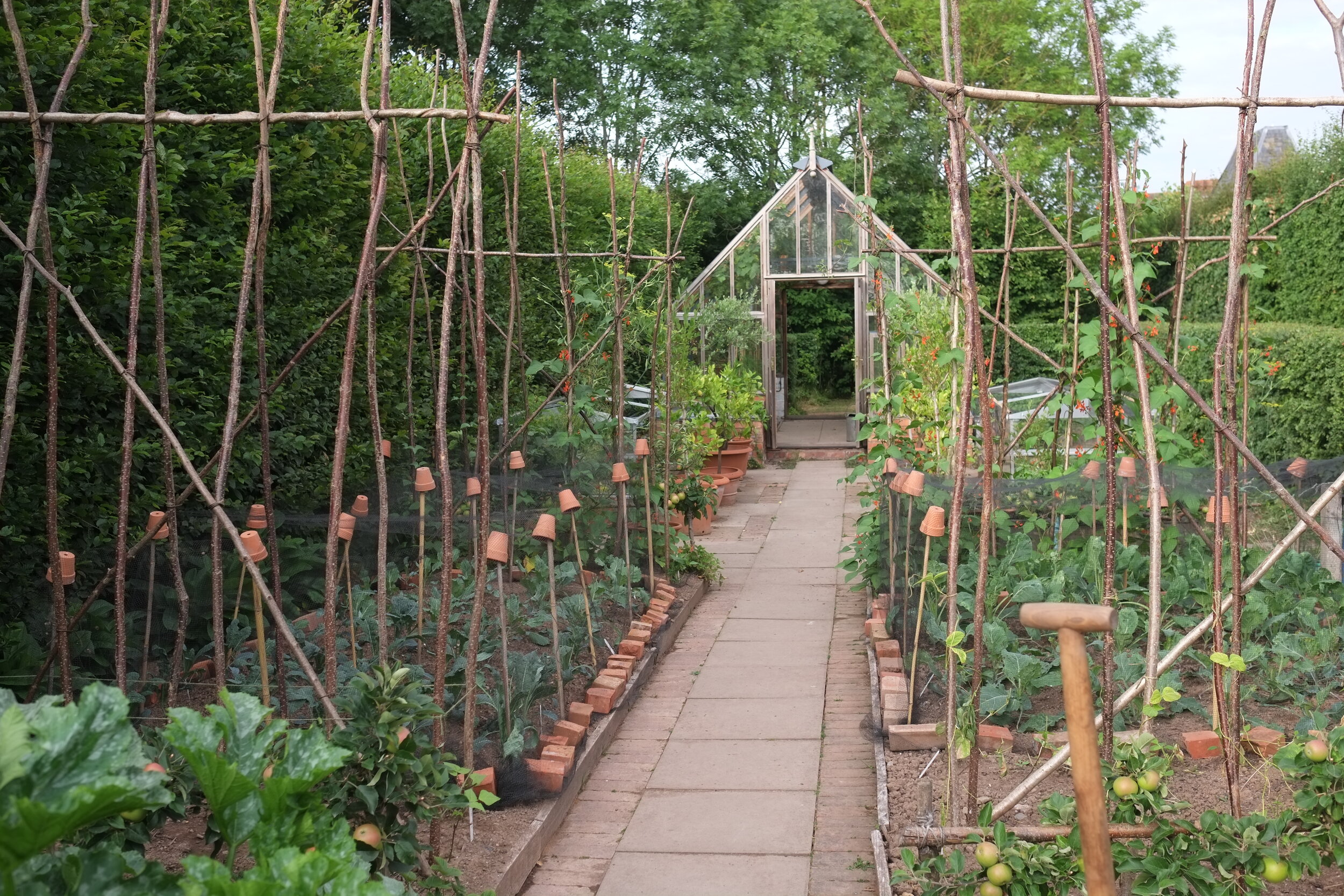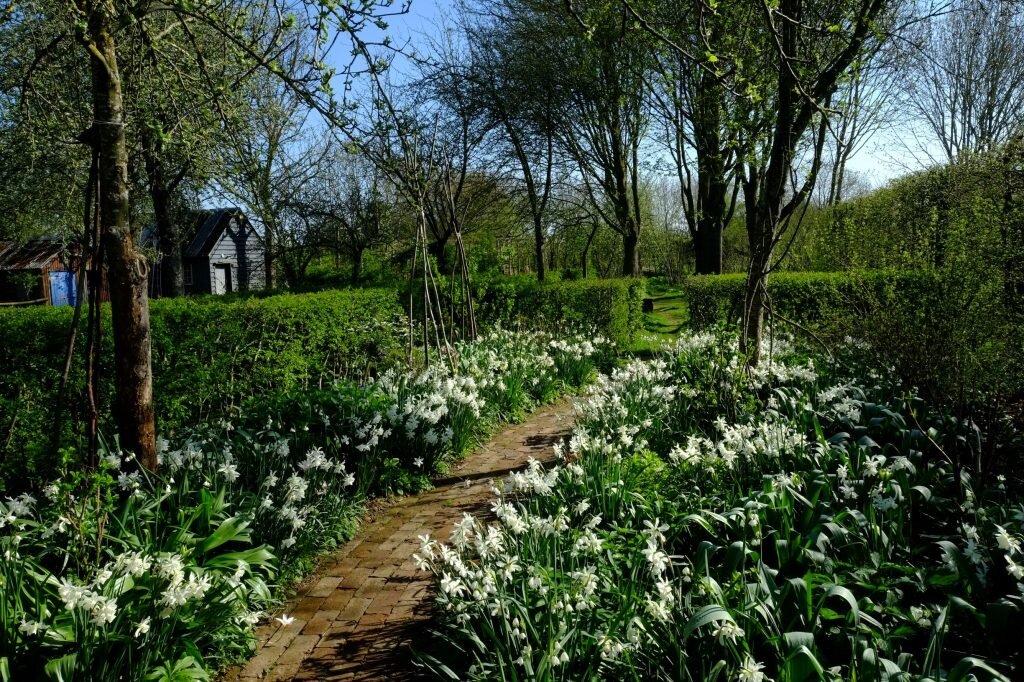

History
When we bought this house in October 1991, the garden consisted of a 2 acre abandoned field out the back and a much smaller area in the front covered in builder’s rubble. That was it. There was one tree - the hazel in what is now the Spring Garden – and everything else was rough grass, nettles and brambles.
I spent the next spring and summer just cutting the rough grass and clearing the rubbish. I raked every inch three times, got to know the lay of this land intimately. All the time I was planning, dreaming and drawing.
I learned that the wind howled in from three sides, so when I began to lay out the garden in the autumn of 1992 I knew the first thing I needed were windbreaks. I bought a hundred 6ft chestnut stakes and quartered them (chestnut cleaves beautifully down the grain) to make 400. I also bought 2,000 bean sticks and wove these between the stakes to make solid fences. The young hedging plants were then planted in the lee of the fences and grew much faster as a result.
The planting began in earnest in Spring ’93 and has never really ceased since. The changes have been dramatic and may seem astonishing to some. But in my mind that early field with its pattern of woven fences protecting the little plants, so small yet filled with dreams, still remains beneath the skin, is still there beneath all the years.
The Garden plan
1. The Cottage Garden
The Cottage garden spent the first 20 years of its existence as a dedicated vegetable garden, conveniently near the kitchen and supplying the family with all our fresh produce. But over the past ten years it has slowly evolved into a traditional, but essentially floral, cottage garden, filled with blowsy, soft colours but also containing fruit trees, rhubarb, gooseberries and some herbs all mingled in together.
In summer it is dominated by over 50 different kinds of old-fashioned shrub roses. In winter the structure is marked out by box hedging and 8 large Irish Yews – that all fitted in the boot of car when we first planted them in 1994!
2. The Jewel Garden
The Jewel Garden is the physical and spiritual centre of the entire garden. Everything revolves around it. It was made as a celebration of all the good things relating to our jewellery business in the 1980’s and all the colours are jewellery or metallic in some way and the tone just like the 1980’s - brash, extravagant and high maintenance! This means that it is rich and intense and that is intensified by the extraordinary vigorous growth of plants in our wonderful Herefordshire loam. In spring it is the home for all our most intense tulips and in Summer tender plants such as dahlias, gingers, bananas, cannas, tithonias, zinnias and sunflowers are grown on and added as soon as the risk of frost has passed. Then, as autumn begins to bite, the Jewel Garden is cut back, tender plants lifted and it hibernates until quite late in Spring to resume its season of blazing glory.
3. The Paradise Garden
In 2017 I visited many countries to see their gardens, all of which shared the same basic adherence to Koranic ideals. The result was a two part series ‘Paradise Gardens for the BBC and a book, with Derry Moore, with the same title.
A greenhouse had fallen down after 20 odd years in one part of the garden so when we cleared it away and found we had a new and empty part of the garden I decided to make my own Paradise Garden based upon the influences I had seen across the Islamic world.
The result is not a copy but a loose inspiration. It is based upon four symmetrical beds arranged in the square charbagh pattern centred upon a water feature that bubbles gently in the centre. A simple pavilion is at the far end that is shaded from the sun but looks out over the whole garden and down through the Orchard beds. Planting both acknowledges the koranic dictates of fruit with pomegranate, olive and citrus trees but also very British crab apples. The planting is modern and based upon a matrix of the soft grass stipa tenuissima with the tulip acuminata, with its long ottoman-like petals in spring and tulbaghia and verbena bonariensis flowering in summer. Roses and Lilies add the essential element of fragrance. What began as an act of homage, almost an academic exercise, has become an important and much loved part of the garden.
4. The Vegetable Garden
I have grown vegetables since I was a small child and growing our own vegetables, herbs and fruit has always been an essential ingredient in the lives of Sarah and I. We do so as much as cooks and lovers of good food as gardeners, always striving for good taste and health over appearance or size. The luxury of strolling out into the garden with a basket to ‘market’ it, selecting whatever is most appetising and ready for consumption and then quickly converting these delicious ingredients into a simple meal is one of life’s great pleasures. Across two sites separated by a hedged path we have a mixture of raised beds, larger beds and some surrounded by low woven fences that are halfway between the two. Our goal is to always have a supply of a good choice of vegetables that we enjoy eating on every single day of the year. This means that we eat seasonally as well as use the greenhouse and cloches to protect plants and also plan our succession very carefully so that as one crop comes to an end there are young plants already growing strongly to replace them, either of the same variety or an alternative type according to the season.
Our fundamental horticultural belief is that you should never force or cajole a plant of any kind, edible or decorative, if it doesn’t want to be there. So we choose vegetables and varieties that we like and which like to grow in our garden.
Spring
Spring comes slowly to the garden. This is a very wet, cold place and the soil takes a while to warm up. Yet from early January the signs are there with snowdrops and aconites appearing and the catkins on the hazels yellow with pollen.
By March there is no going back. The weather can still be very wintry but the garden is committed to Spring. The Spring garden was made to relish every possibility of the season and wave after wave of flower push forward culminating in mid May with the earliest species roses and the cow parsley which then takes over completely.
The various areas of long grass and wild flowers are rich with crocuses that are soon followed by narcissi, fritillaries and camassias. The hedges start to prickle with new green leaves and the orchard trees billow with blossom. The final hurrah and dramatic colour comes from the radiant display of alliums and tulips in May.

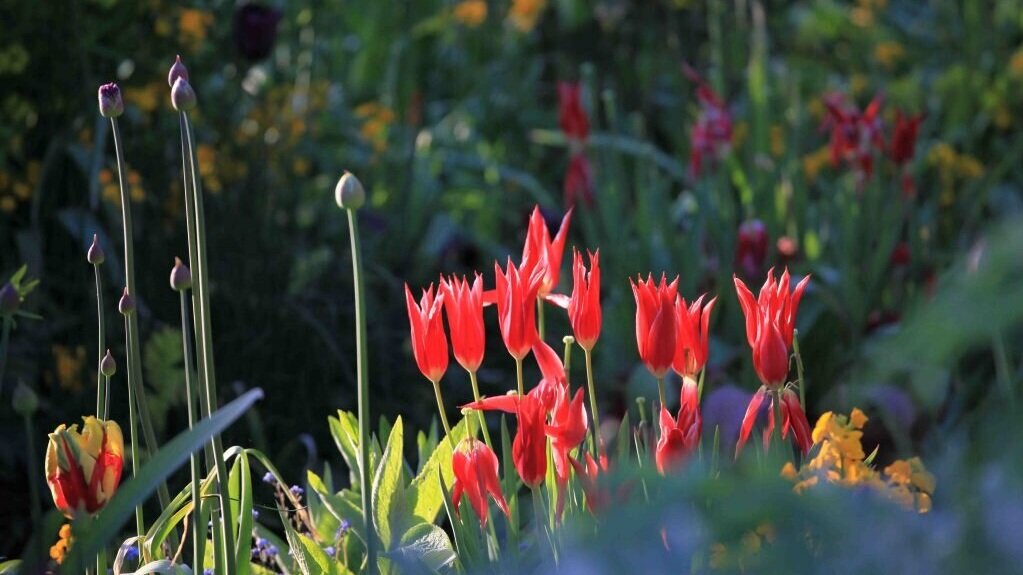

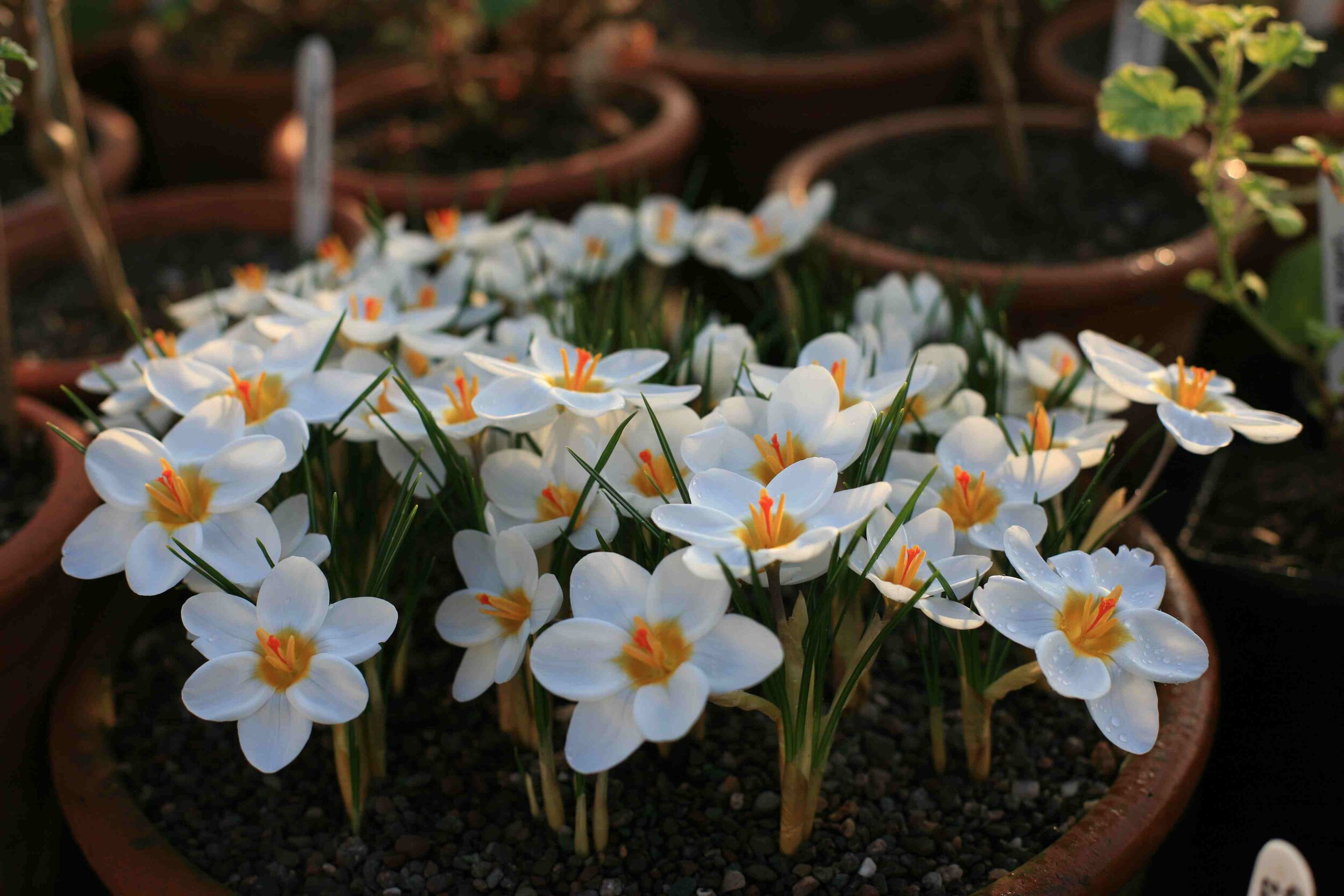
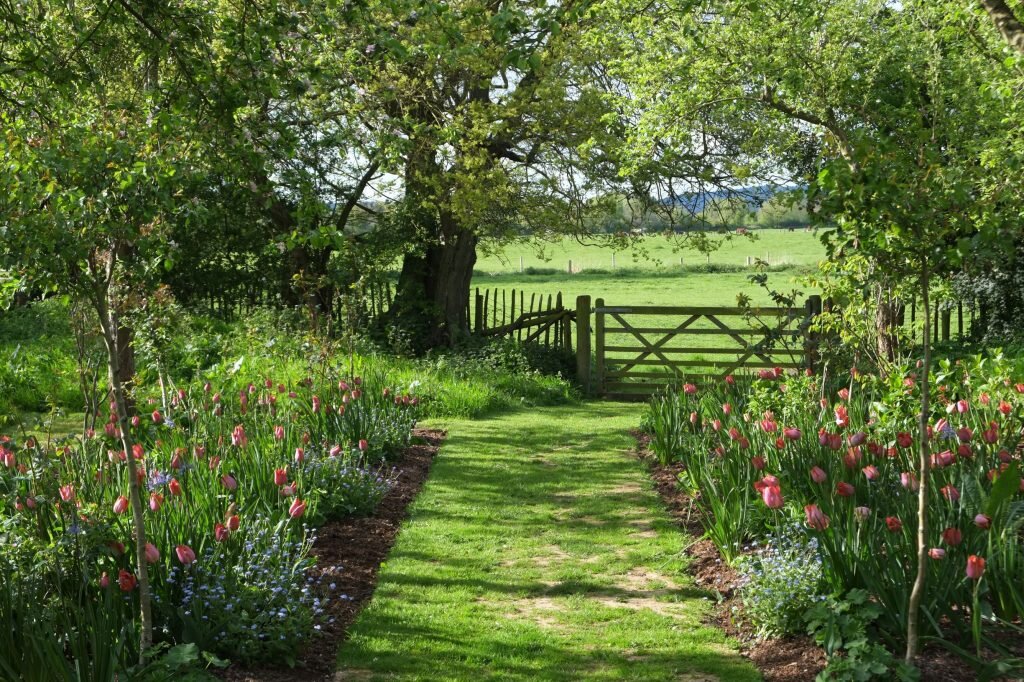
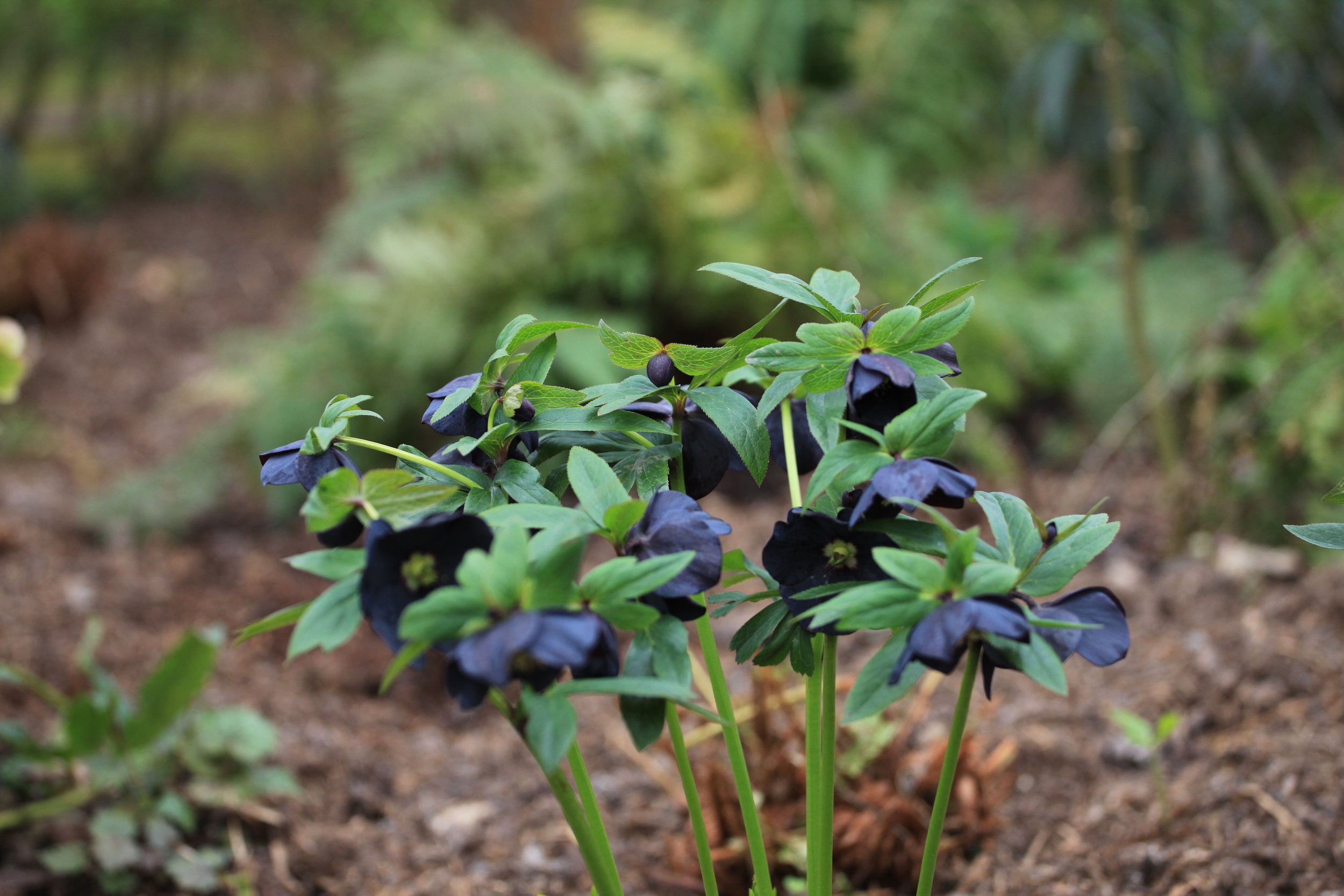
Summer
There are two summer seasons in this garden. The first starts at the end of May and continues to mid July and then there is a noticeable shift as the light changes slightly and the whole garden heats up until September.
Throughout June the days are at their longest, the light at its brightest and all the deciduous foliage, be it of an aquilegia or oak tree, is full but still fresh. Roses are at their best, large-flowered clematis are glorious and plants like Iris, foxgloves, alliums and lupins crown the borders. There is a a real sense of the garden coming magnificently into being but still rich with the promise of more to come.
The Jewel garden really hits its stride in August and September despite the shortening days because the nights are warm and dahlias, bananas, zinnias, tithonia, sunflowers, helianthus, nicotiana and cosmos are flowering exuberantly. this is when the falling light levels coupled with heat make the rich colours like plum, caramel, purple and ruby red glow richly.

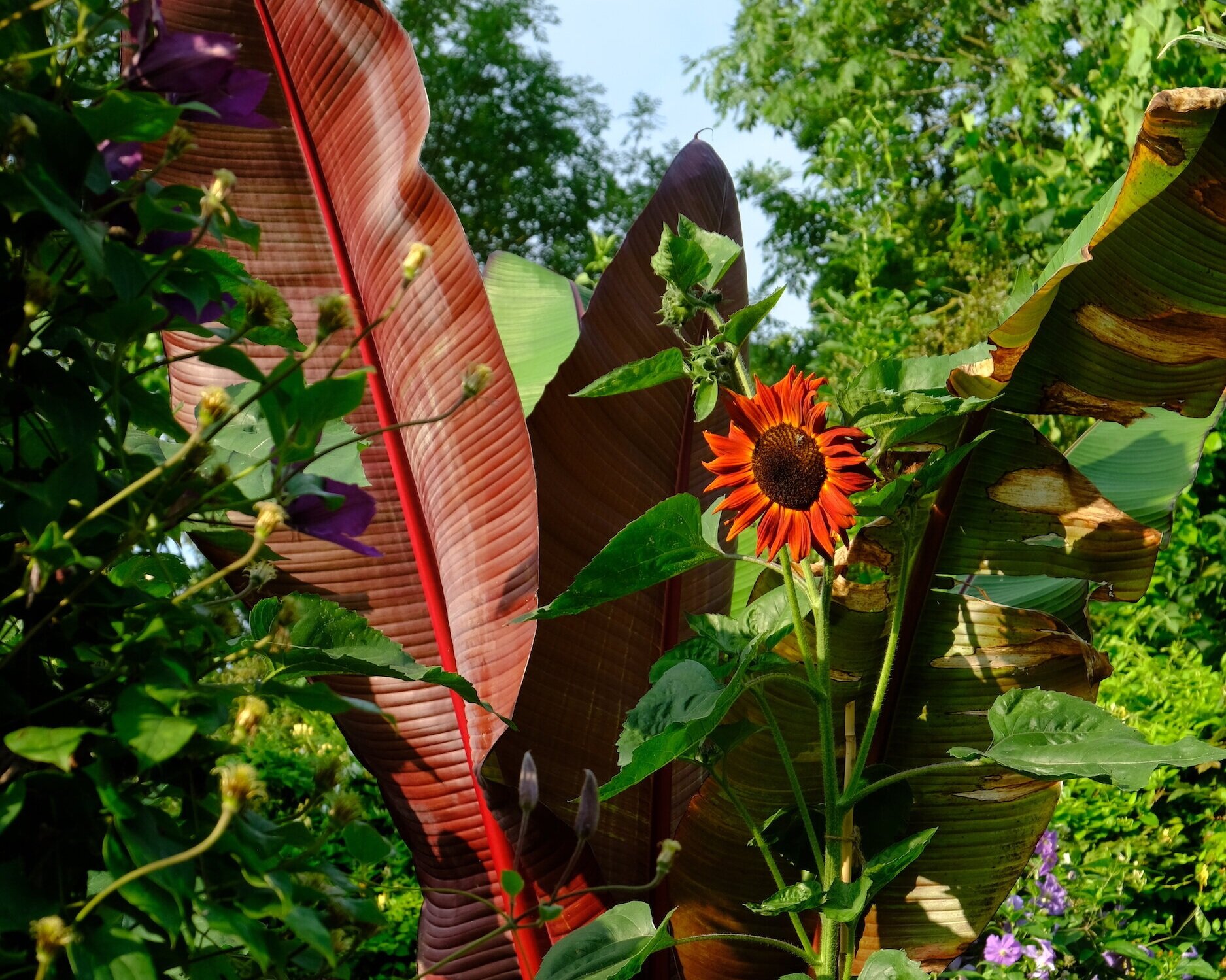
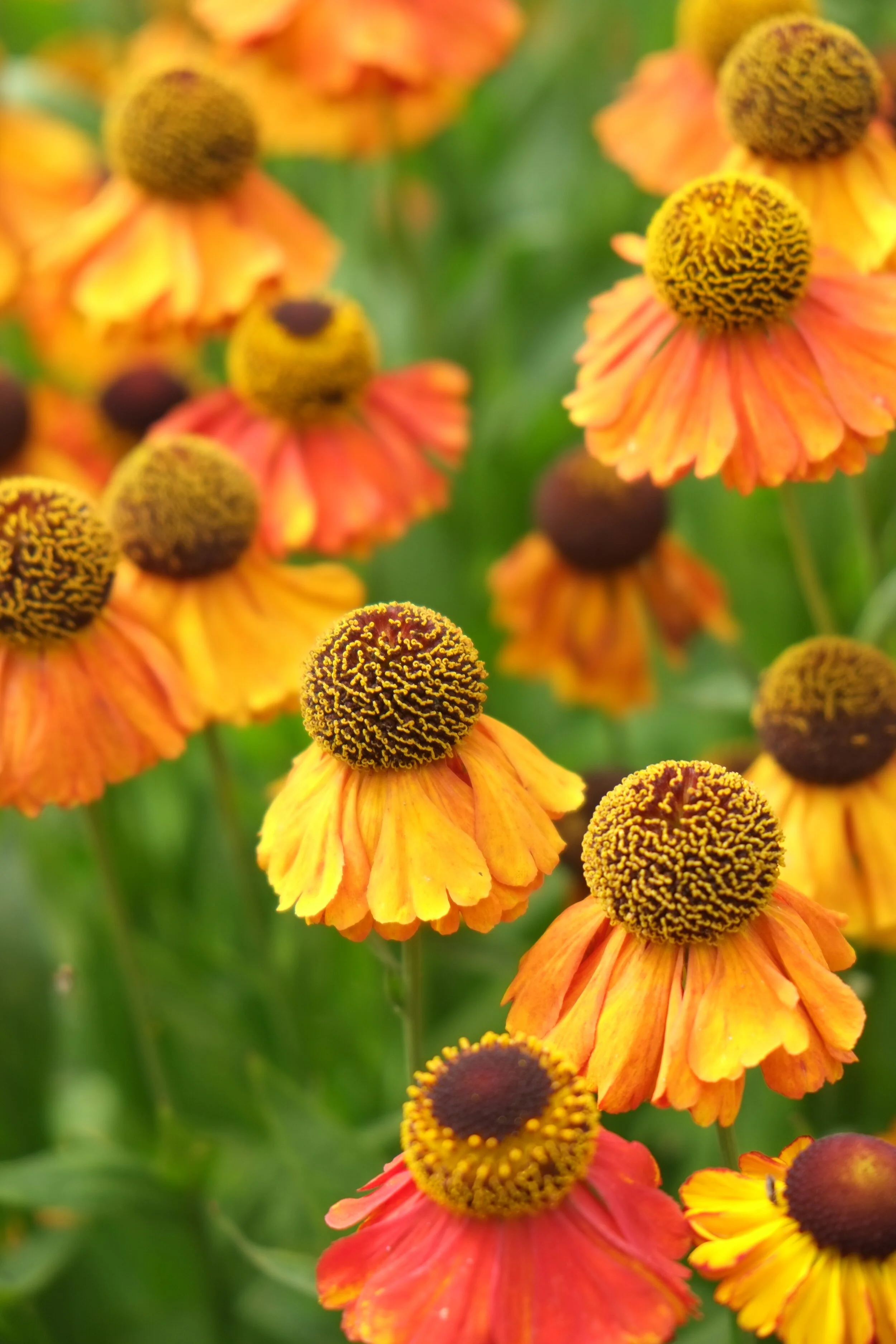



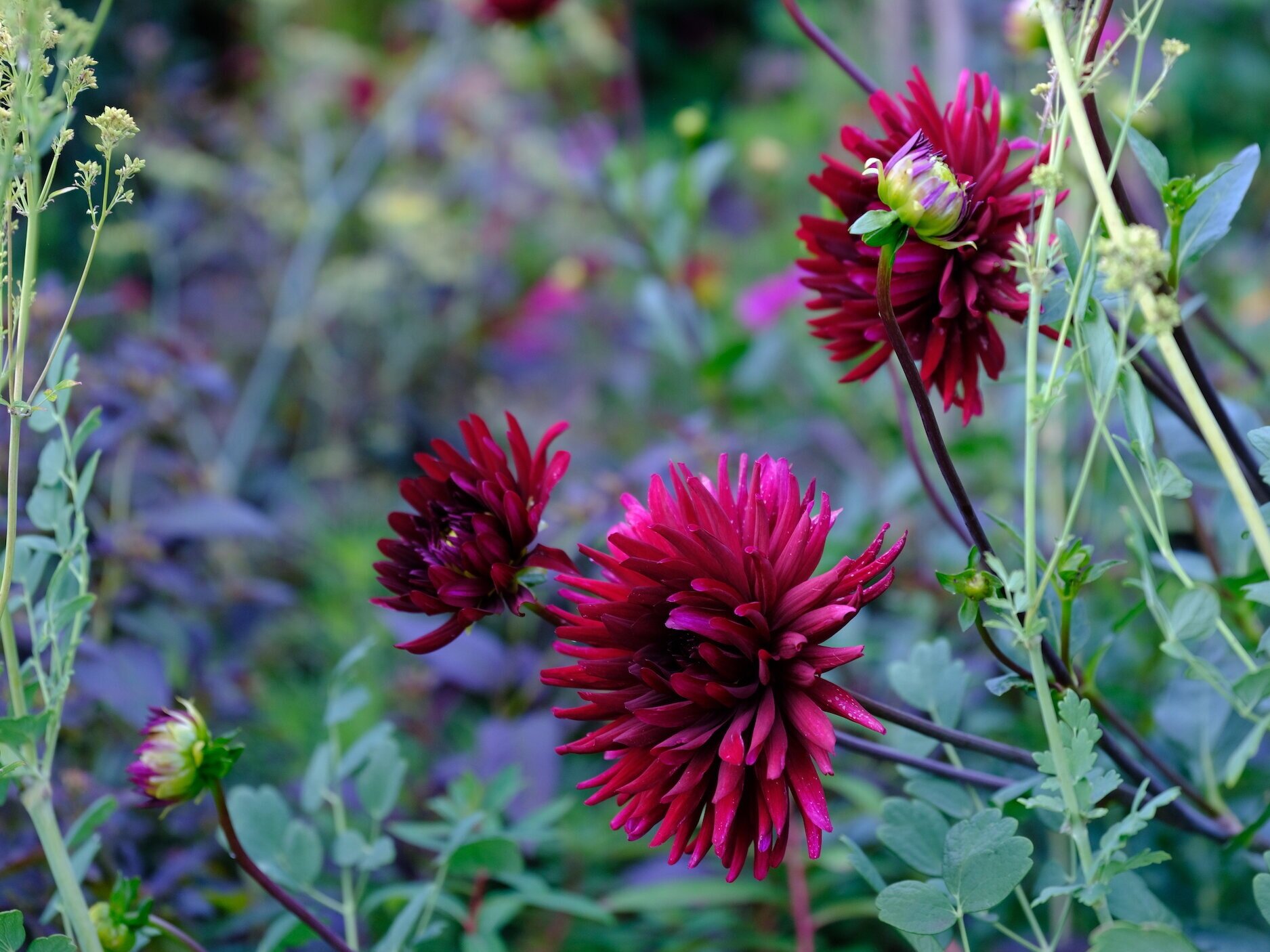
Autumn
By mid September the garden is gently beginning to become wraith-like and withdrawn. It is as though the garden is disappearing somewhere where I cannot follow.
But the lemon light of September is both radiant and wistful, touched simultaneously with glory and regret.
It is also the season of fruitfulness with the orchard providing over 50 different varieties of apples and the vegetable garden offering its final rich summer harvest.
Another autumnal harvest we treasure are the falling leaves. Every one is gathered and stored to make leaf-mould which rots down to become an essential component of our home-made potting compost and a perfect mulch for woodland plants.
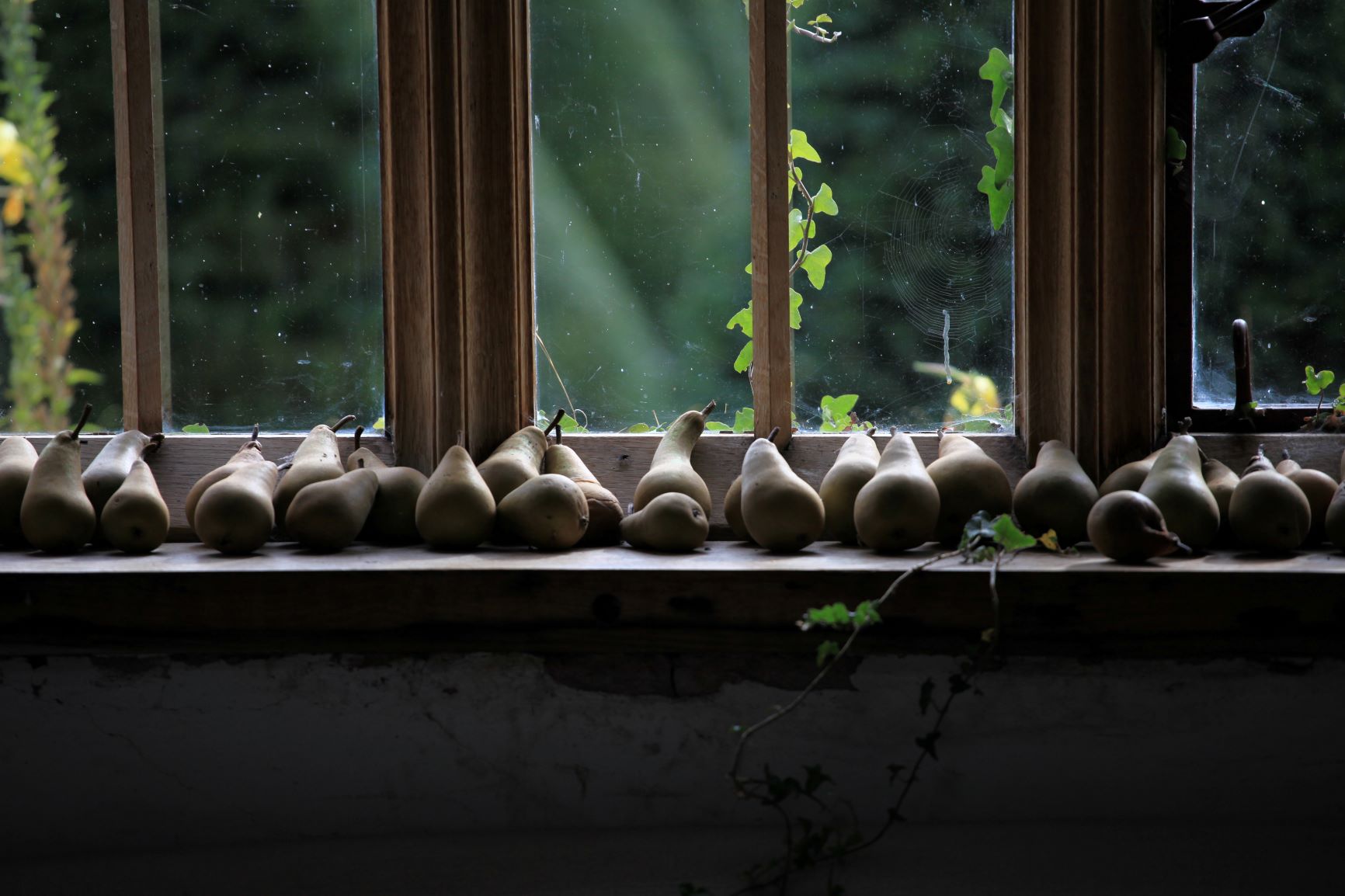
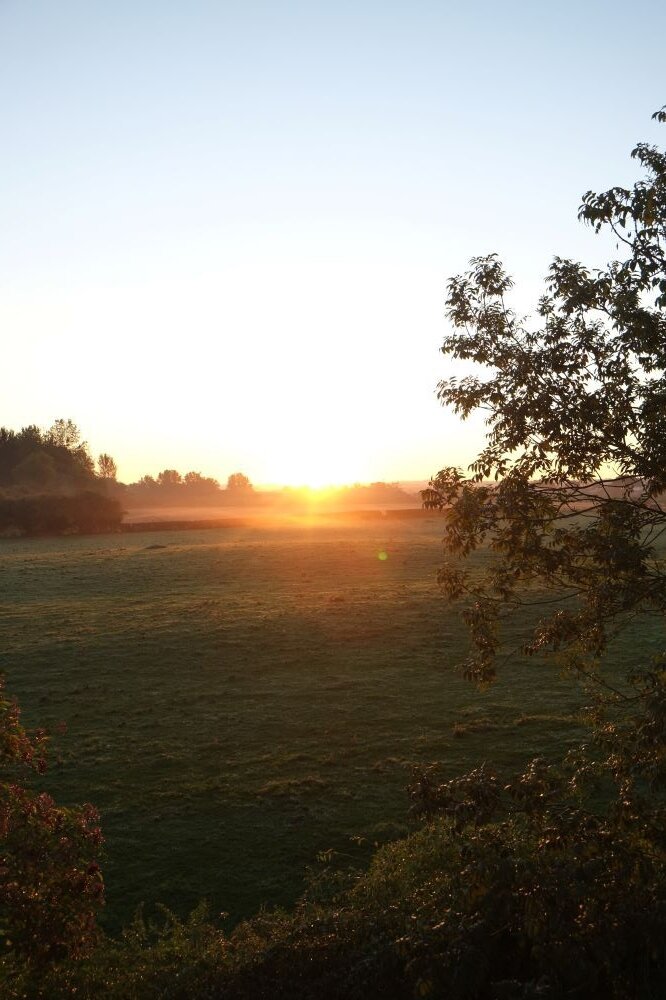

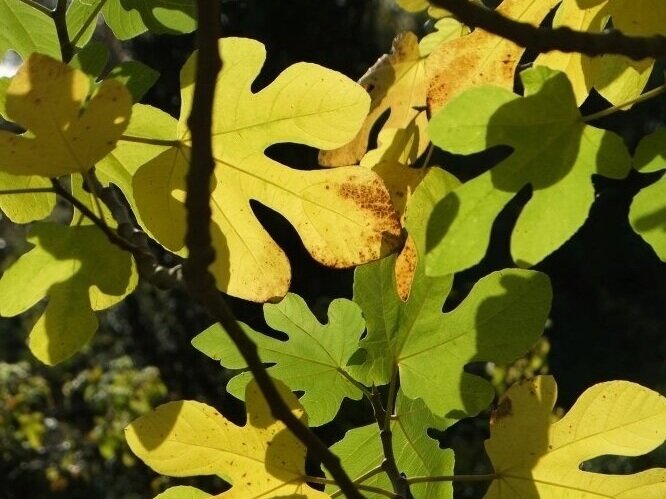


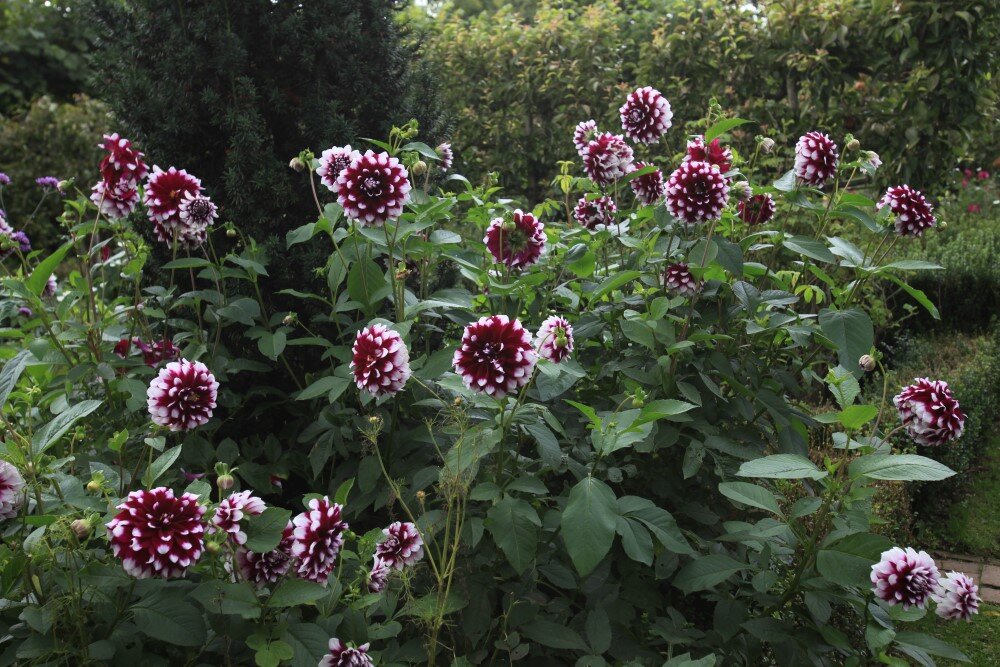
Winter
We always hope for a cold, dry winter although with climate change a very wet, rather mild one is becoming all too common. Seasonably cold with temperatures somewhere between -10 and + 5 centigrade, is healthy for the garden and makes life easier for us gardeners. But when it is wet for weeks and we do not see the sun at all for days on end then it is miserable and gardening dribbles to a soggy halt. We do our best to ready the garden for winter by the end of November, protecting tender plants and clearing the decks and then hunker down in December and January before work begins again in earnest in February and the gardening year swings around again.
